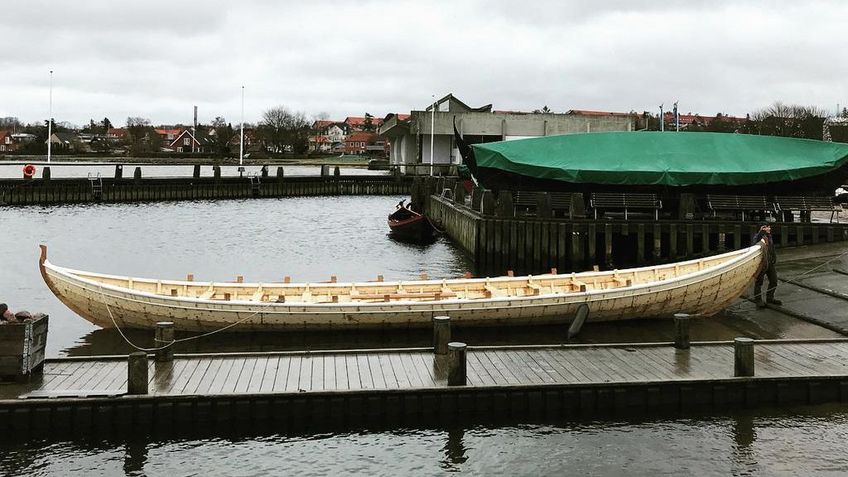
The Nordic Ship - The Faroe Boat
Sagas, archaeological finds, and Nordic place names and loanwords all give voice to the Vikings’ activities and settlements in the North Atlantic region. There are many traces from the Viking Age on the Orkney and Shetland Islands, Iceland, Greenland and as far west as Newfoundland in North America. On the Faroes, each facet of Faroese culture has a strong connection to the past, directly linked to the Viking Age. This culture and the rugged landscape have sustained many traditions, including those concerning maritime craftwork. Like Viking ships, the Faroese boat has a light construction, is double-ended with high stems and has a marked sheer. The Faroe boat was first and foremost developed as a rowing boat, due to the special geography of the island group. Narrow sounds with strong currents, deep fjords and steep fells with the risk of strong squalls can make it difficult to manoeuvre by sail.
Intangible cultural heritage
Practice, practice and more practice is a prerequisite for all good craftwork. A boatbuilder must understand the connection between building materials, a boat’s function and the waters it will be used in. This is the foundation for traditional boatbuilding and for preserving the maritime craftwork and culture surrounding the boats. The Viking Ship Museum works actively to preserve maritime craftwork through different building projects. The clinker-built boats that are still built on the Faroes are the descendants of the Vikings’ ships. The same is true of the craftwork connected to the boats.
On the Faroe Islands, boats are still built by eye and rule of thumb, in other words, without any moulds. The boatbuilder shapes the boat’s lines by eye. The boat’s form is created over some fixed measuring points, which are marked out during construction. Today, boatbuilders use a carpenter’s ruler but in times past, a measuring stick – a so-called tre-alen-stok – was used. An apprentice learned the boatbuilding trade by working together with an experienced boatbuilder. It is said that he had served his apprenticeship after he had built 10 boats together with the master.
Apart from a few tree-like plants, trees and bushes did not originally grow on the Faroes. Where did the Faroese acquire wood for their boats? Crooked driftwood and driftwood in general, could be used for elements of the boats’ internal construction, the frames and thwart knees, as well as for planking material. Otherwise, the Faroese boats were built with wood imported from Norway. Norwegian boats were also used, though an account from 1673 tells that the Faroese own boats were better. This is because the Faroe boats were built specifically for the dangerous tidal conditions in the waters between the islands.
Villages on the Faroes were dependent on fishing and contact with the outside world, and were therefore located near the sea. In the old days, the boatbuilder travelled between villages and built to order. He took his tools with him – an axe, a saw, a plane and a knife, and construction took place in the open, close to water. The difficult landing conditions on the cliffs of the Faroese coasts had a great impact on the boats’ form.
The Faroese boat has, right up until the last half of the 20th century, been of critical importance for fishing, whaling and transport between the islands. The various straits placed their own demands on the boats capabilities, and boatbuilders applied their own experience to each build. It is therefore said that no two Faroese boats are the same. Faroe boats are found in different sizes. During the 20th century, the Faroe boats were developed further as motorboats and for rowing races.